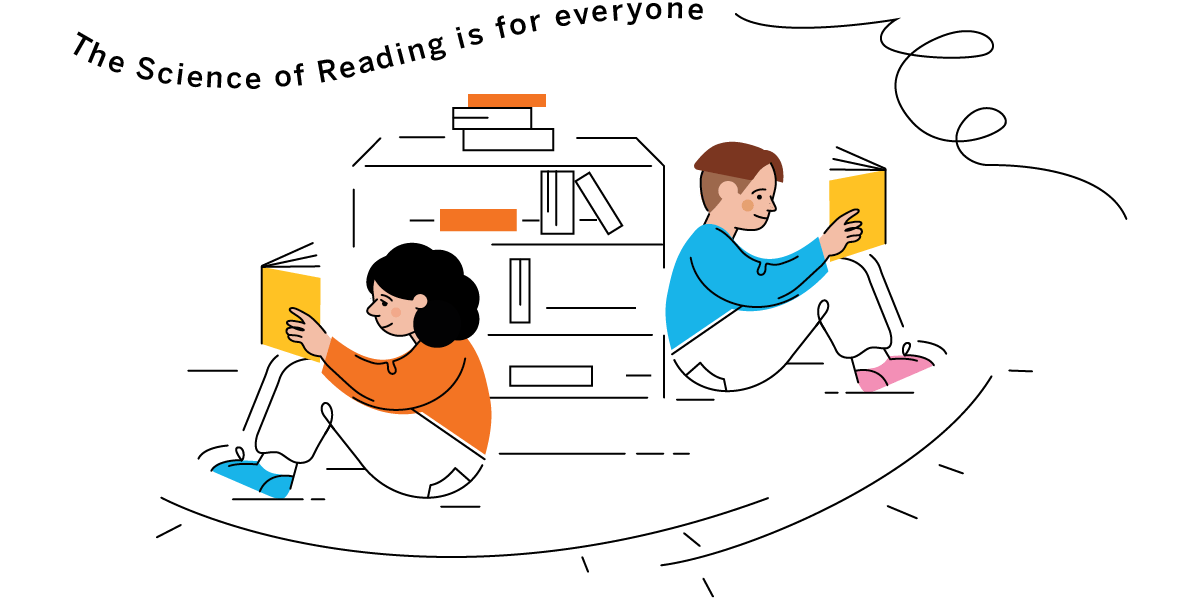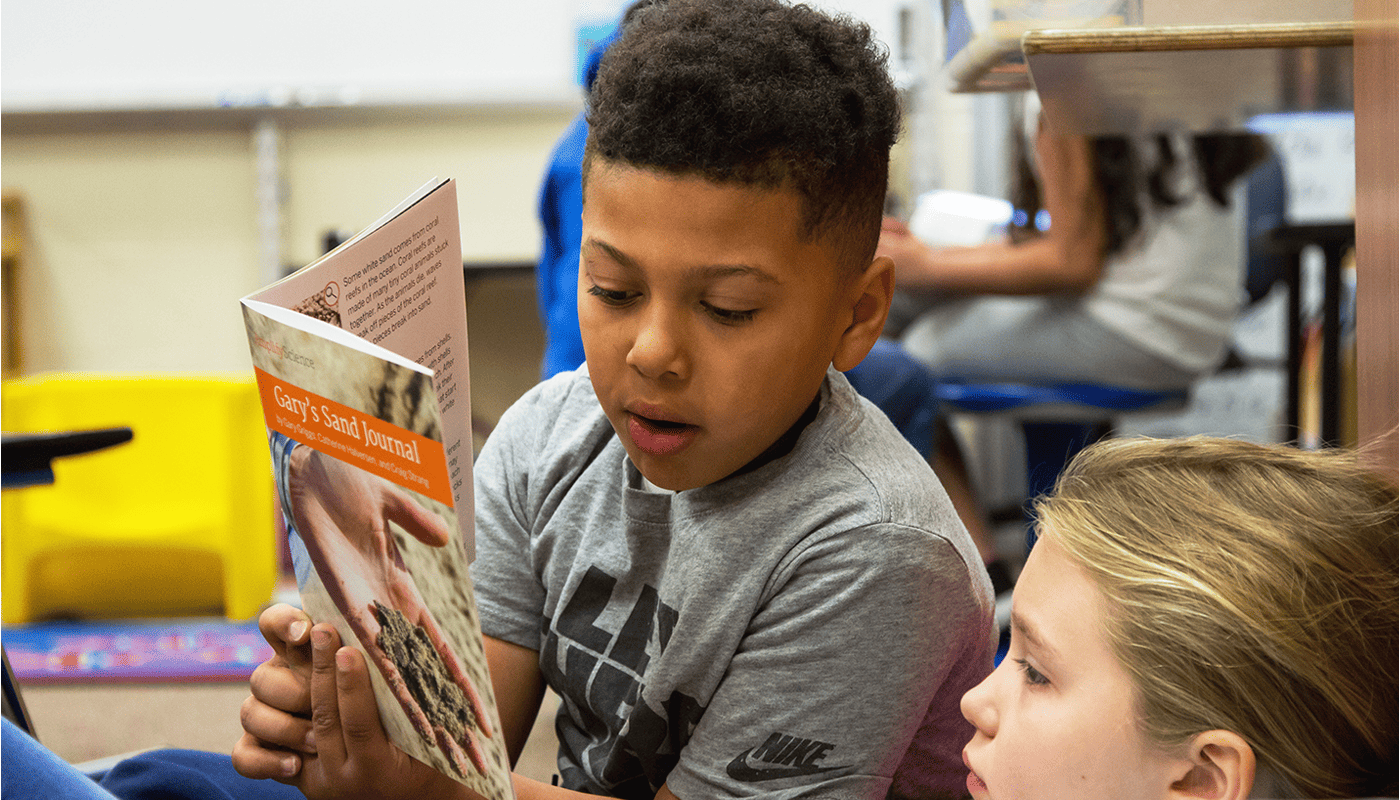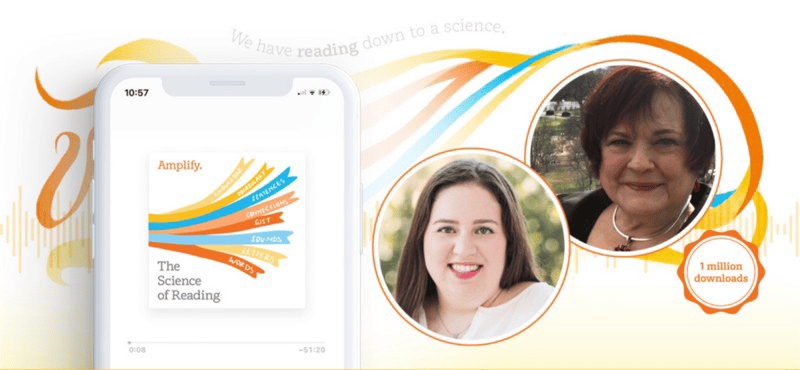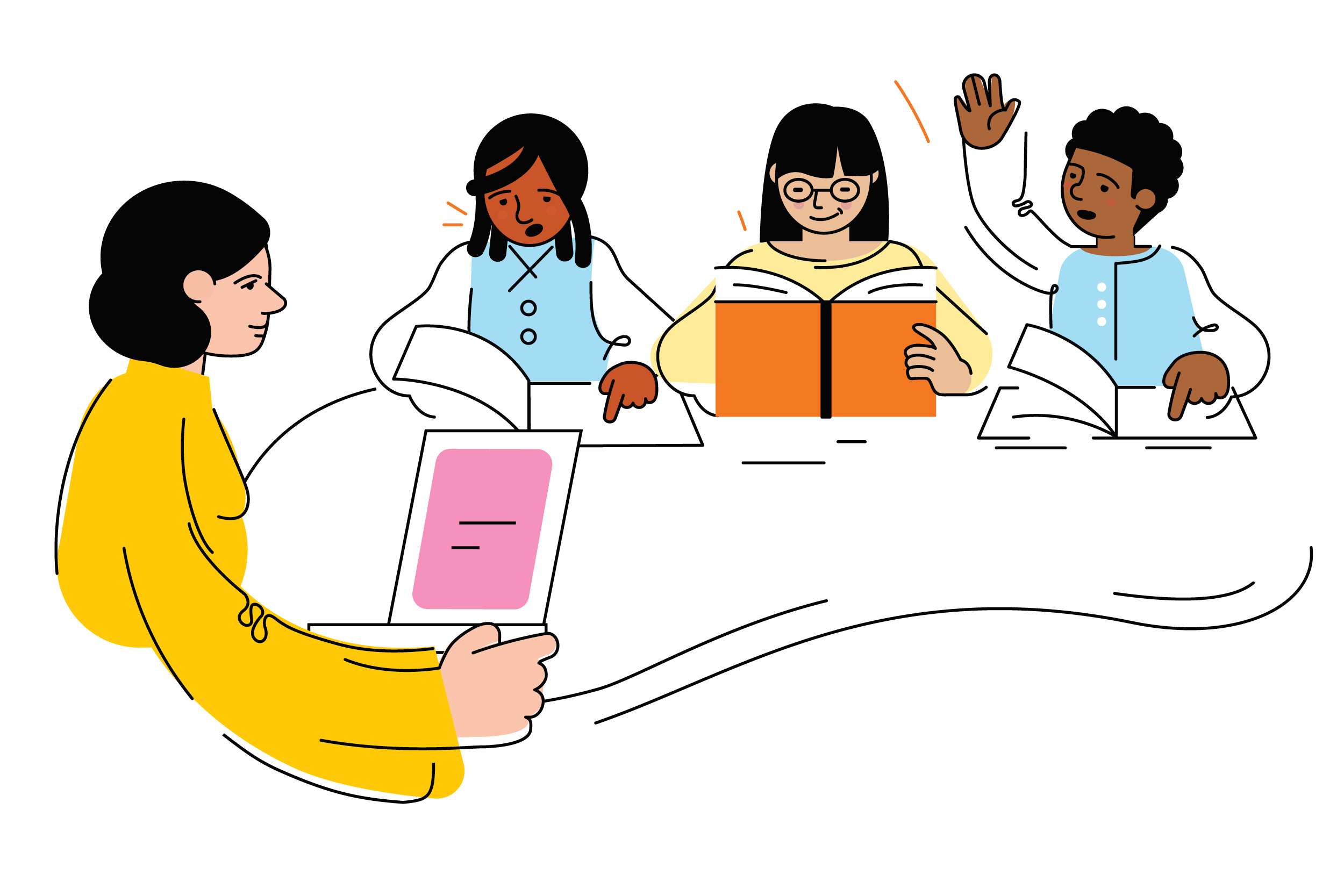You know how engaged middle-school students are—in their own emotions, relationships, and TikToks. How do you engage them in your ELA classroom?
It’s tough! It’s not just about holding their attention while they’re in class. We need to provide the kind of real engagement that leads to real learning.
Research confirms (not surprisingly) that getting middle schoolers ready for college and career depends on it, and requires a truly engaging ELA curriculum.
The stakes are high. Sixth-grade students who fail a literacy course are more than 50% more likely to not graduate from high school.
Yet, on average, middle-school ELA students spend less than 20% of class time engaged with the text. In a 50-minute class period, that’s only 10 minutes of text.
At Amplify, we believe greater engagement with text is key not only for ELA success, but for all academics. That’s why we created these four actionable principles of middle-school ELA engagement.
Middle-school is a moment—one we must seize.
First, here’s why middle schoolers require an approach and curriculum designed just for them.
Young people at middle-school age are becoming increasingly independent, and increasingly self-conscious. They need to feel respected and safe when they participate, especially when they make mistakes. They’re super focused on their peers, but they still depend on guidance from you.
There’s a lot going on in their worlds, and there’s a lot going on in their brains. In fact, early adolescence is the second-biggest stage of rapid brain development.
The development is happening largely in the prefrontal cortex. It’s the area that brain researcher Maryanne Wolf calls “the cognitive workspace.” When it comes to middle-school ELA curriculum, we want to use strategies that engage students in using their cognitive workspaces.
The 4 principles of middle-school engagement
We believe these four principles are most essential to engaging middle-school students in developing their literacy skills—and becoming confident, active learners.
- Enable all students to work up. Provide multiple entry points and scaffolds so that every student can find their way into a text or activity. Here are some differentiation strategies:
- Incorporate multimedia. Often a video dramatization or audio recording can help students connect with a complex text.
- Scaffold with passage previews, read-alongs, and questions that make students want to re-read.
- Don’t forget vocab! Daily practice makes a huge difference, especially with assignments designed to challenge students at their level.
- Provide just right feedback. At this age, it’s important for students to see opportunity rather than failure.
- Quick over-the-shoulder notes feel actionable and encouraging.
- Training all students to offer helpful comments creates a positive vibe around feedback.
- Focusing on specifics helps students know how to proceed and improve.
- Engage multiple modalities, especially collaboration. Students comprehend text in all sorts of ways—hearing, speaking, writing, seeing, performing, and more. Try alternate modalities like dramatic readings or debates, which also give students the benefits of working together.
- Promote critical thinking. This one’s the biggest idea beneath all the others.
To be fully engaged, middle schoolers need to know that their work is relevant and recognized. A truly engaging curriculum supports a range of observations and interpretations. Some approaches:
- Be clear that the text, not the teacher, has the answers. Ask questions like “How did you get to that response?” Help students follow this rule: If you can justify it in the text, you can hold on to your interpretation.
- Guide students to develop theories rather than get it right. For example, ask questions like “Why does (or doesn’t) this make sense?”
- Try the Socratic style. Emphasizing inquiry and discussion brings home the power of open-ended questions. It also positions the teacher as facilitator, not deliverer of all knowledge.
These principles won’t just help your students get through middle-school—they’ll help you get through to your middle schoolers.
Learn more.
Read more about Amplify ELA, including an overview of the components of the curriculum in grades 6–8.




